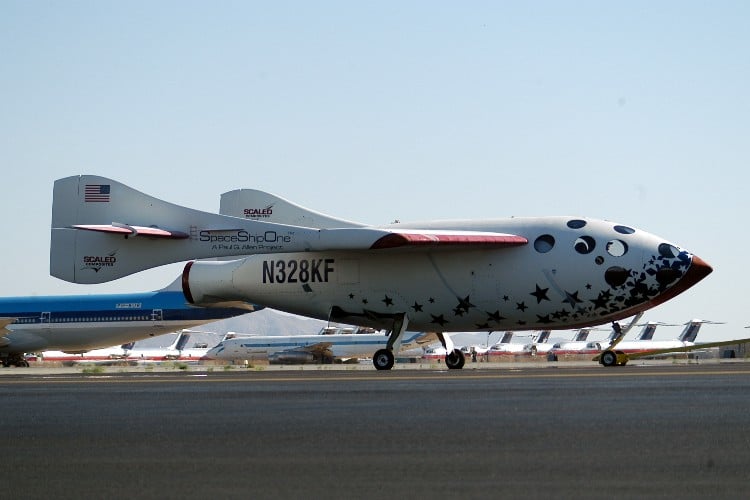This Day, That Year – October 4
Tue 04 Oct 2022
This day in history we feature SpaceShipOne. This spacecraft won the Ansari X Prize for private spaceflight on this day in 2004.
Trivia – SpaceShipOne
SpaceShipOne is an experimental air-launched rocket-powered aircraft with sub-orbital spaceflight capability at speeds of up to 3,000 ft/s, using a hybrid rocket motor. The design features a unique “feathering” atmospheric reentry system where the rear half of the wing and the twin tail booms folds 70 degrees upward along a hinge running the length of the wing; this increases drag while retaining stability. SpaceShipOne completed the first crewed private spaceflight in 2004. That same year, it won the US$10 million Ansari X Prize and was immediately retired from active service. Its mother ship was named “White Knight”. Both craft were developed and flown by Mojave Aerospace Ventures, which was a joint venture between Paul Allen and Scaled Composites, Burt Rutan’s aviation company. Allen provided the funding of approximately US$25 million.
Related read – ISS to alter orbit altitude before the Russian cargo spacecraft’s arrival
The vehicle first achieved supersonic flight on December 17, 2003, which was also the one-hundredth anniversary of the Wright Brothers’ historic first powered flight. SpaceShipOne’s first official spaceflight, known as flight 15P, was piloted by Mike Melvill. A few days before that flight, the Mojave Air and Space Port was the first commercial spaceport licensed in the United States. A few hours after that flight, Melvill became the first licensed U.S. commercial astronaut. The overall project name was “Tier One” which has evolved into Tier 1b with a goal of taking a successor ship’s first passengers into space. The achievements of SpaceShipOne are more comparable to those of the X-15 than to those of orbiting spacecraft like the Space Shuttle. Accelerating a spacecraft to orbital speed requires more than 60 times as much energy as accelerating it to Mach 3. It would also require an elaborate heat shield to safely dissipate that energy during re-entry.
Source – Wikipedia
This day in history Blackpool Tramway

 Apr 20 2024
Apr 20 2024













